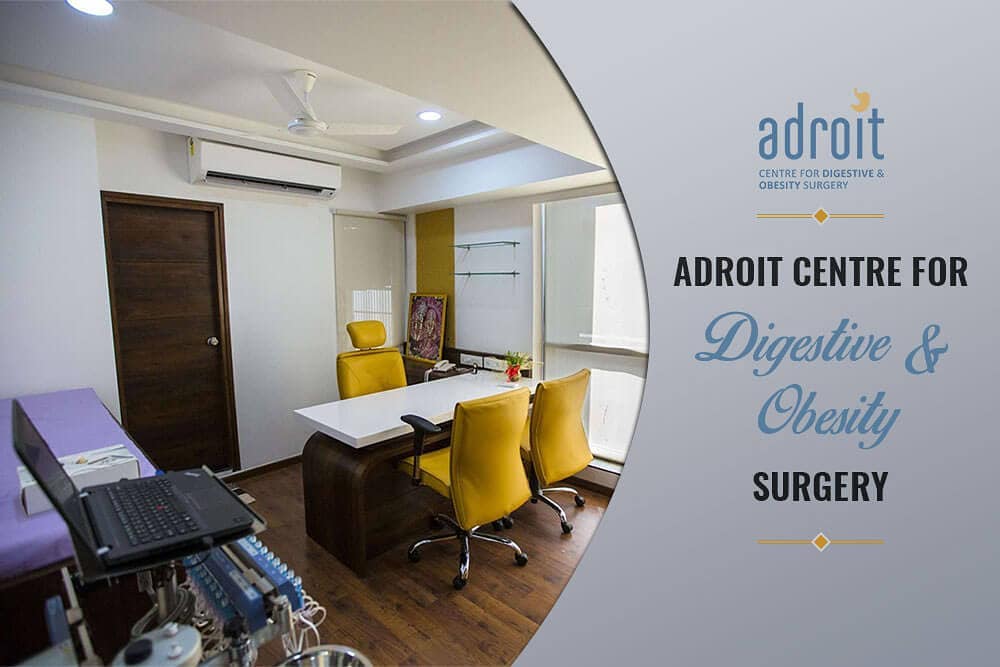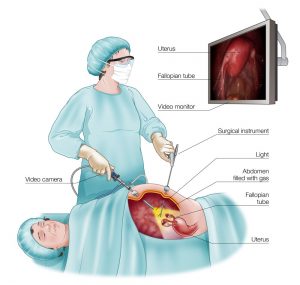‘Laparoscopy’ is derived from ancient Greek words- ‘lapara’ meaning ‘flank or side’; and ‘skopeo’ meaning ‘to see’. Historically it was first used in Germany for surgery in the abdominal region. What makes laparoscopic surgery specialized is the usage of minimal cuts and incisions on the patient’s body. The tool used to make the cuts during surgery is termed as the ‘laparoscope’.
There are various terminologies used to describe this kind of surgery such as ‘minimally invasive surgery’ and ‘bandaid surgery’. Previously, cuts of larger sizes from 6 to 12 inches had to be undertaken to perform abdominal or pelvic surgeries. The newer technology entailed in this surgery is the presence of a small camera at the end of the laparoscope, which enables the surgeon to have visual aid on a screen with lesser incisions.
Types of laparoscopic surgery:
- Laparoscopic Cholecystectomy: Removal of the gall bladder.
- Laparoscopic hernia repair: Repair of the hernia.
- Laparoscopic Hepatectomy: Removal of part of liver.
- Laparoscopic Splenectomy: Removal of the spleen.
- Laparoscopic Pancreatectomy: Removal of the pancreas.
The camera can be inserted in the same incision as the laparoscope. This is a form of advanced laparoscopy, and requires extra precision by the laparoscopic special surgeon. In other forms of surgery, the surgeon may make an incision large enough for his hands to reach in. This is known as ‘hand assisted’ laparoscopy, and is also popular as it is less complicated.
Robotic laparoscopy is another advanced form of surgery wherein; robotic arms control the movement of the laparoscope during surgery. The doctor needs to observe the screen and guide the movement of the mechanical arms for proceeding with the surgery. Robotic laparoscopy is considered useful for patients who weigh more, and also for urology and gynecology surgeries.
Benefits of laparoscopic surgery:
- It is less painful for the patient as there are no major cuts or incisions on the body.
- There are smaller and lesser visible scars on the body post-surgery.
- Recuperation post-surgery is faster for the patient.
- Internal and external scarring is minimal as it is a minimally invasive surgical technique.
- Costs are reduced as hospital stay post-surgery is minimized as compared to traditional surgeries.
Risks involved in laparoscopic surgery:
- Infections are common in case the surgeon is not very experienced in laparoscopy.
- The patient may experience unexpected bleeding during surgery, and require urgent blood transfusion. In case of rare or uncommon blood types, this could pose to be a big risk.
- There exists also a risk of potential damage to the internal organs of the patient.
- Local anesthesia may not agree with all patients, and there could be an allergic reaction to the same. This would make it difficult for the doctor to perform the surgery in a timely manner.
- Blood clotting is also a risk in laparoscopic surgeries.
- Infection of the abdomen or inflammation is a risk for abdominal laparoscopic surgeries.
- In some rare cases, this surgery could lead to further complications like hernia.
Post-Operative care:
The patient may experience a range of symptoms post-surgery like fatigue, sore throat, tiredness, bloating, shoulder and back pain, and pain at the site of incision. These persist usually for around 2 days, after which the patient can resume with normal activity levels. Laparoscopy has revolutionized surgery by cutting short post-operative care periods for the patients drastically. Earlier patients’ treatment and surgery would require more than a week to fully recover. Patients are advised to abstain from heavy lifting and physical strain after laparoscopic surgery to prevent any adverse reaction to the body.
Cost of laparoscopic surgery:
Pricing of any surgery depends on a variety of factors like- public or private hospital, location of the hospital, facilities availed, experience of the surgeon, complication level of the surgery, urgency of performance of surgery, etc. Private hospitals and clinics are usually more expensive as compared to Government aided hospitals. Post-surgery care and intensive recuperation is also considered better in private hospitals, considering the higher fees involved.
A standard laparoscopic cholecystectomy would cost around INR 10,000 in a small clinic or nursing home. This is the most common kind of laparoscopy performed on patients. This cost would more than double in a larger private hospital. Average treatment costs are around INR 25,000 considering premium hospitals and facilities. Based on the level of complication of the surgery and patient history, costs could also escalate to INR 1 lakh.
Conclusion:
Laparoscopic surgery has advanced the turnaround time and precision of surgeries by the usage of a simple technology to aid surgeons. It has also helped reduce the pain experienced by patients during and after surgery. Though there are some risks, it is still a very safe and reliable alternative for treating common abdominal and pelvic ailments like hernia, gall bladder stones, problems in the liver etc.


